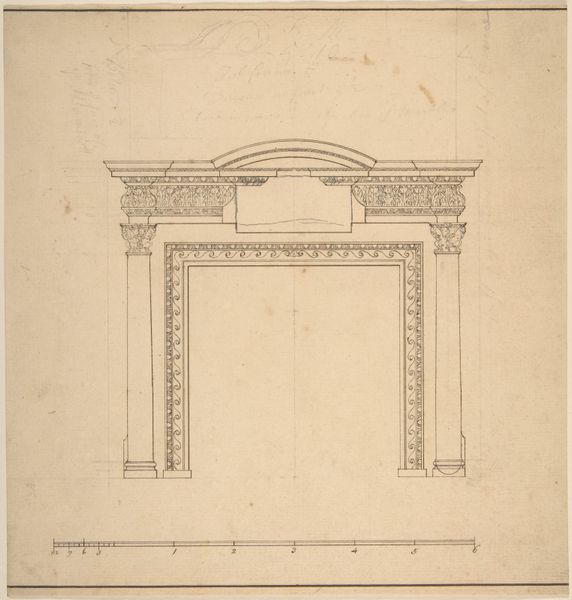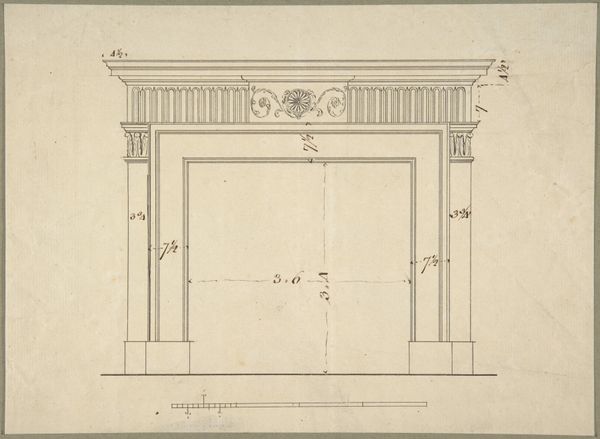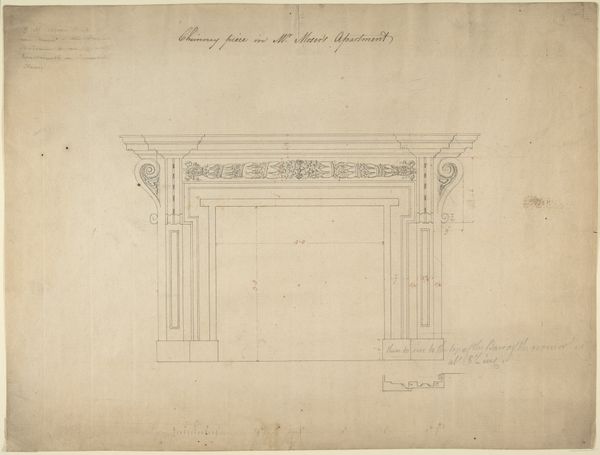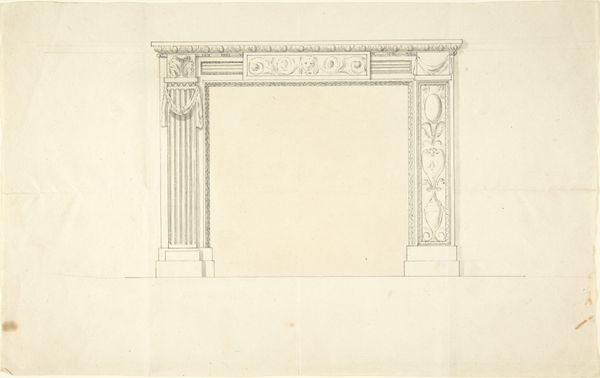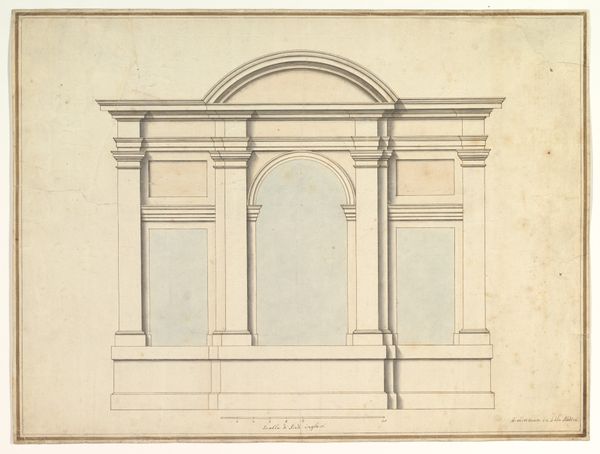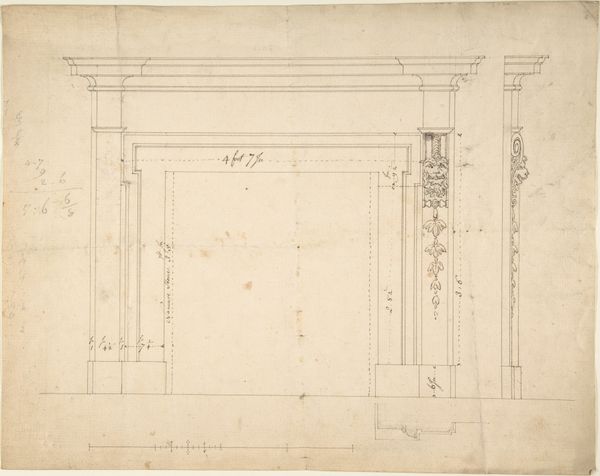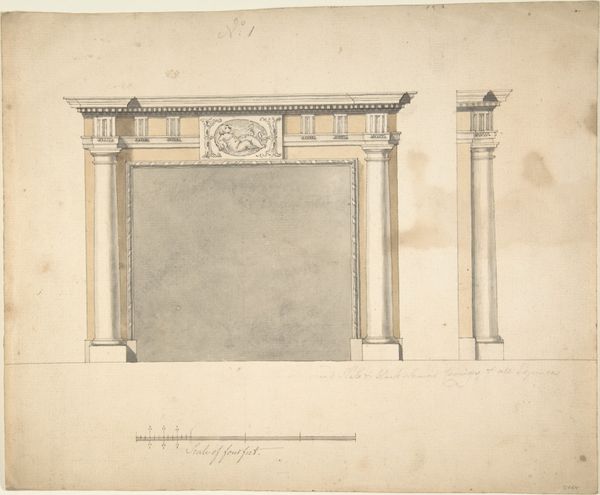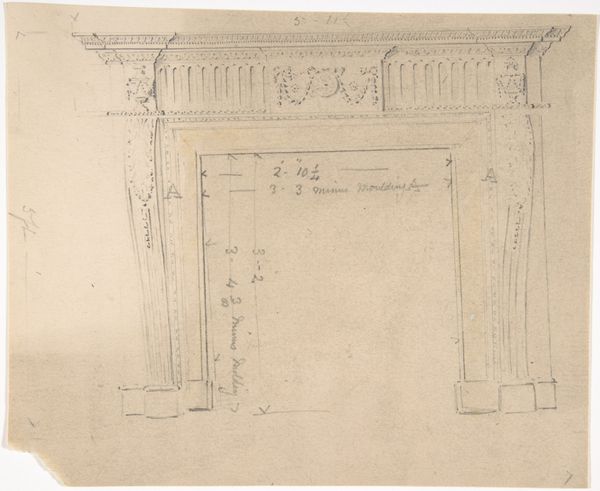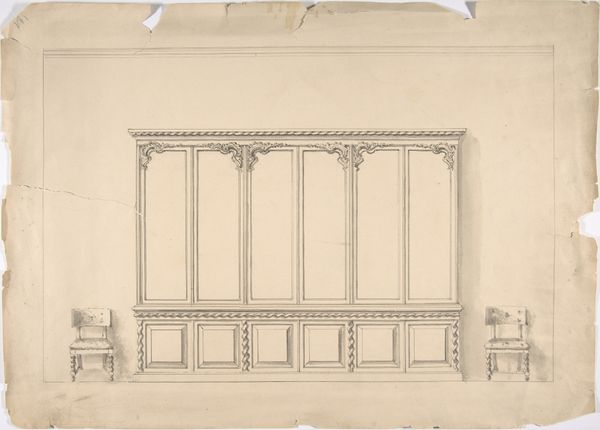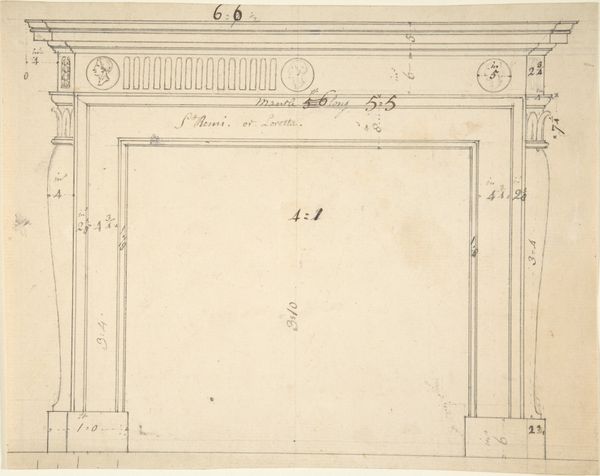
drawing, print, architecture
#
drawing
#
neoclacissism
# print
#
geometric
#
classicism
#
architecture
Copyright: Public Domain
Sir William Chambers designed this chimneypiece, probably in the 1760s, during a period of intense building in Britain. The design reflects a deep interest in classical forms, reviving a distant past to lend authority to the present. Chambers was a leading figure in the British architectural establishment, an institution that played a crucial role in shaping taste and defining standards. This drawing embodies the values of that institution: order, balance, and a restrained elegance. The classical motifs—the columns, the moldings, the symmetrical arrangement—speak to a desire for permanence and stability, values that resonated with the British elite of the time. For them, the ability to build and furnish homes in this style was a symbol of status, connecting them to a lineage of power and refinement. The historian can look to pattern books, architectural treatises, and social histories of the period to understand how this design functioned within its specific cultural and institutional context. The meaning of art is contingent on the social and institutional context.
Comments
No comments
Be the first to comment and join the conversation on the ultimate creative platform.
